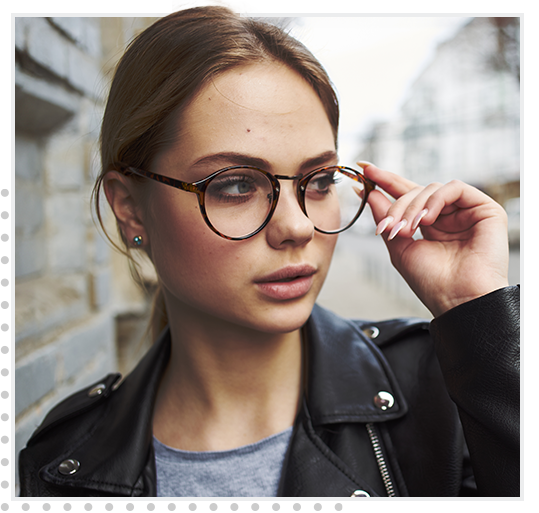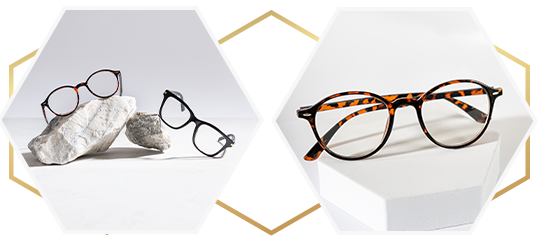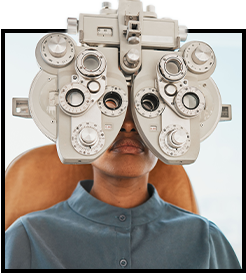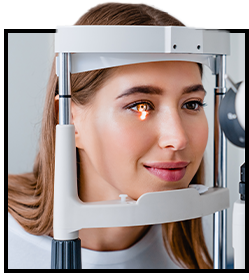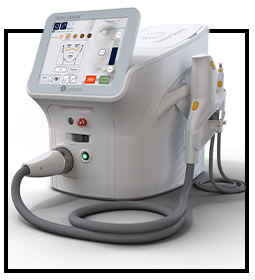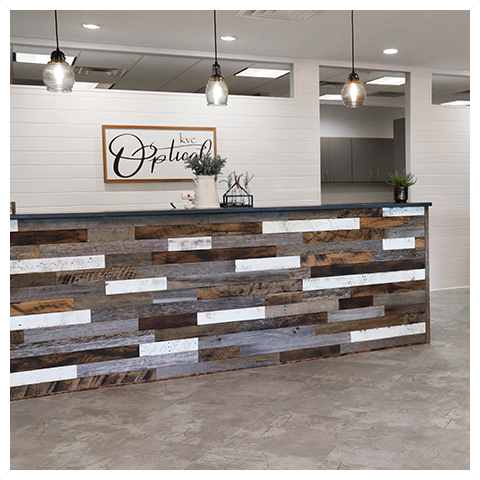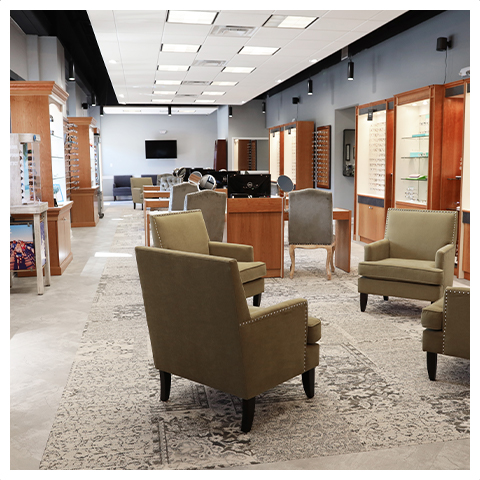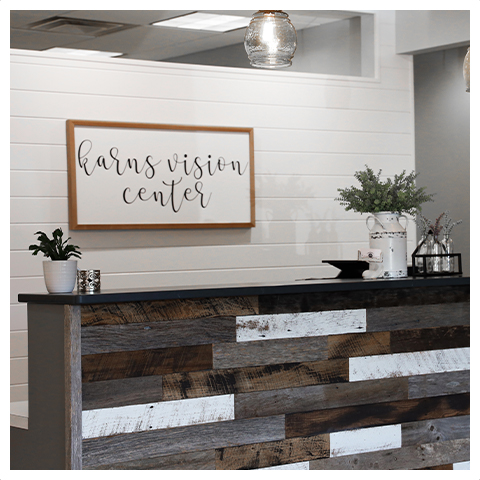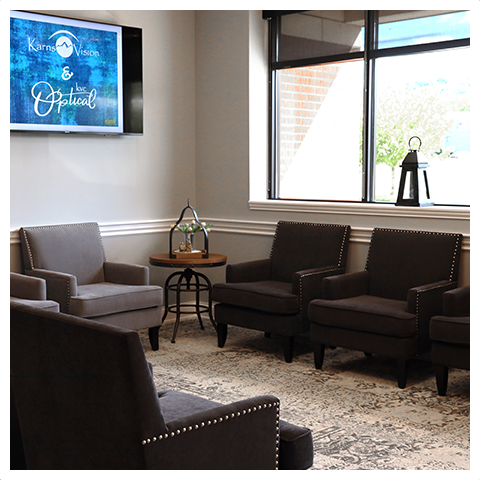Your Dry Eye Treatment Destination
Dry eye disease is a chronic condition that can significantly impact your quality of life. At Karns Vision Center, we understand the frustration dry eyes can cause. That’s why we offer a comprehensive range of dry eye treatments in Knoxville to help you find relief and restore eye comfort.
Dry eye can leave your eyes feeling watery, irritated, and sensitive. We can help improve your symptoms through treatments like OptiLIGHT by Lumenis, meibomian gland expression, and more.
Don’t let your dry eye symptoms slow you down—contact our eye clinic to schedule your appointment today and get relief.
Request AppointmentUnderstanding Dry Eye
Dry eye occurs when your tear production is insufficient or the quality of your tears is poor. Several factors can contribute to dry eye, including:
- Environmental factors
- Age-related changes
- Underlying medical conditions
- Certain medications
Your eyes need tears to stay healthy. The tear film is a layer of tears covering the surface of your eyes that protects against infections and provides nutrients.
What Is Meibomian Gland Dysfunction?
Meibomian gland dysfunction (MGD) is a chronic and progressive condition affecting the function of the tiny meibomian glands that line your eyelids. These glands produce the tear film’s oily layer, which is essential for preventing your tears from evaporating too quickly.
MGD symptoms can include:
- Watery eyes
- Fluctuating or blurry vision
- Discomfort wearing contact lenses or eye makeup
OptiLIGHT by Lumenis can address MGD by gently stimulating your meibomian glands, helping release the oils your eyes need.
Common Dry Eye Symptoms to Look Out for
Some common dry eye symptoms can include:
- Eye redness
- Stinging or scratching sensations
- Light sensitivity
- Watery eyes
- Blurry vision
It’s important that we treat your dry eye symptoms early to minimize the risk of complications.
Our team can help you find relief through dry eye screenings and personalized treatments.
Getting the Diagnostics Right
At Karns Vision Center, we begin by conducting a thorough dry eye screening to identify the specific cause of your symptoms.
We take a multi-faceted approach to dry eye treatment to address the underlying cause and alleviate symptoms. Depending on your case, we may use various diagnostic tools.
Meibography
This imaging technique allows us to visualize the meibomian glands located in your eyelids. These glands produce the oily layer of your tears, and dysfunction (MGD) can contribute to dry eye. Examining the glands can assess their health and identify any blockages.
Automated TBUT
An automated tear break-up time test (TBUT) measures how long it takes for tears to evaporate, indicating the quality and stability of the tear film. A shorter TBUT indicates excessive tear evaporation, a hallmark of dry eye.
Schirmer’s Test
This test measures tear production by placing a small strip of paper under your lower eyelid. The amount of moisture the paper absorbs over a set time provides a baseline tear production measurement.
Dyes/Staining
Specialized dyes highlight any damage to the surface of your eye, helping us assess the severity of dry eye. These dyes can reveal dry spots on the cornea or inflammation along the eyelid margins.
The Different Types of Dry Eye
Dry eye is a complex disease caused by several different factors. It’s generally classified into 2 main types: aqueous-deficient and evaporative.
Aqueous-deficient dry eye occurs when your eyes don’t produce enough of the watery component of your tears, called the aqueous layer. It can be caused by aging, medical conditions, or medications.
Evaporative dry eye occurs when your tear film lacks the oily layer, leading to the tears evaporating too quickly. It can be caused by a blockage or dysfunction in the meibomian glands.
Tailored Dry Eye Treatment Options
Once we understand the cause of your dry eye, we can recommend a personalized treatment plan to address your specific needs.
Whether you need in-office treatments or at-home solutions, we can help you find the right treatment option. If you have any questions or concerns, please feel free to ask our team during your appointment. We are always happy to help!
OptiLIGHT by Lumenis
OptiLIGHT by Lumenis is a light-based, non-invasive treatment done in the area below the eyes to manage dry eye. The first and only IPL FDA-approved for dry eye management.
The treatment is safe, gentle, and is backed by more than 20 clinical studies.
OptiLIGHT uses precise pulses of light to reduce the inflammation that is typically associated with dry eye disease, improve tear break-up time, and increase meibomian gland functionality.
Meibomian Gland Expression
This technique involves gently massaging your eyelids to help express any blockages in the meibomian glands, improving the flow of natural oils in your tears. Meibomian gland expression can help restore the glands’ healthy function and improve the quality of your tears.
Punctal Plugs
These tiny inserts placed in your tear ducts can help prevent tears from draining away too quickly, keeping your eyes lubricated for longer. Punctal plugs are a simple and effective solution for some dry eye patients.
Eyelid Debridement
Eyelid debridement is a natural treatment method that helps remove debris or bacteria that have accumulated on the eyelids, improving the quality and quantity of tears produced and reducing feelings of irritation.
This simple procedure is typically performed in-office by our team and involves using a specialized tool to gently remove the debris or bacteria built up on the eyelids.
Medicated Drops
If you suffer from chronic dry eye, medicated eye drops may be an effective treatment option to relieve your discomfort. These drops contain an active ingredient that helps to reduce inflammation and increase the eye’s natural ability to produce tears.
For more information about specific eye drops we offer, please contact our team!
Eyelid Sprays, Masks, & Supplements
Warm compresses and eyelid hygiene products can help manage symptoms and improve comfort. These treatments can help loosen debris from the eyelids and improve the overall health of the eyelid margin.
We also offer supplements like Omega-3s. Omega-3 fatty acids have been shown to improve tear production and overall eye health. We can discuss whether dietary changes or supplements might benefit your condition.
Nutritional supplements can offer a natural approach to support tear production and eye health.
Restore Your Comfort & Enjoy Healthy Vision
At Karns Vision Center, our team is committed to helping you address your dry eye symptoms and taking your comfort back. From the initial dry eye screening to determining what dry eye treatment is right for you, we’re with you every step.
Dry eye can be challenging, but you don’t have to deal with it alone—contact us to schedule your dry eye appointment in Knoxville today.
Request AppointmentCome Visit Us
Visit Us
You can find us off Oak Ridge Hwy with plenty of parking available outside the clinic.
Our Address
- 7686 Oak Ridge Highway
- Knoxville, TN 37931
Contact Information
- Phone: 865-247-7715
- Fax: 865-247-7716
- Email: contactus@karnsvision.com
Hours of Operation
- Monday: 9:00 AM – 6:00 PM
- Tuesday: 9:00 AM – 6:00 PM
- Wednesday: 8:30 AM – 5:00 PM
- Thursday: 8:30 AM – 5:00 PM
- Friday: 7:30 AM – 4:30 PM
- Saturday: 9:00 AM – 12:00 PM
- Sunday: Closed
Our Brands
